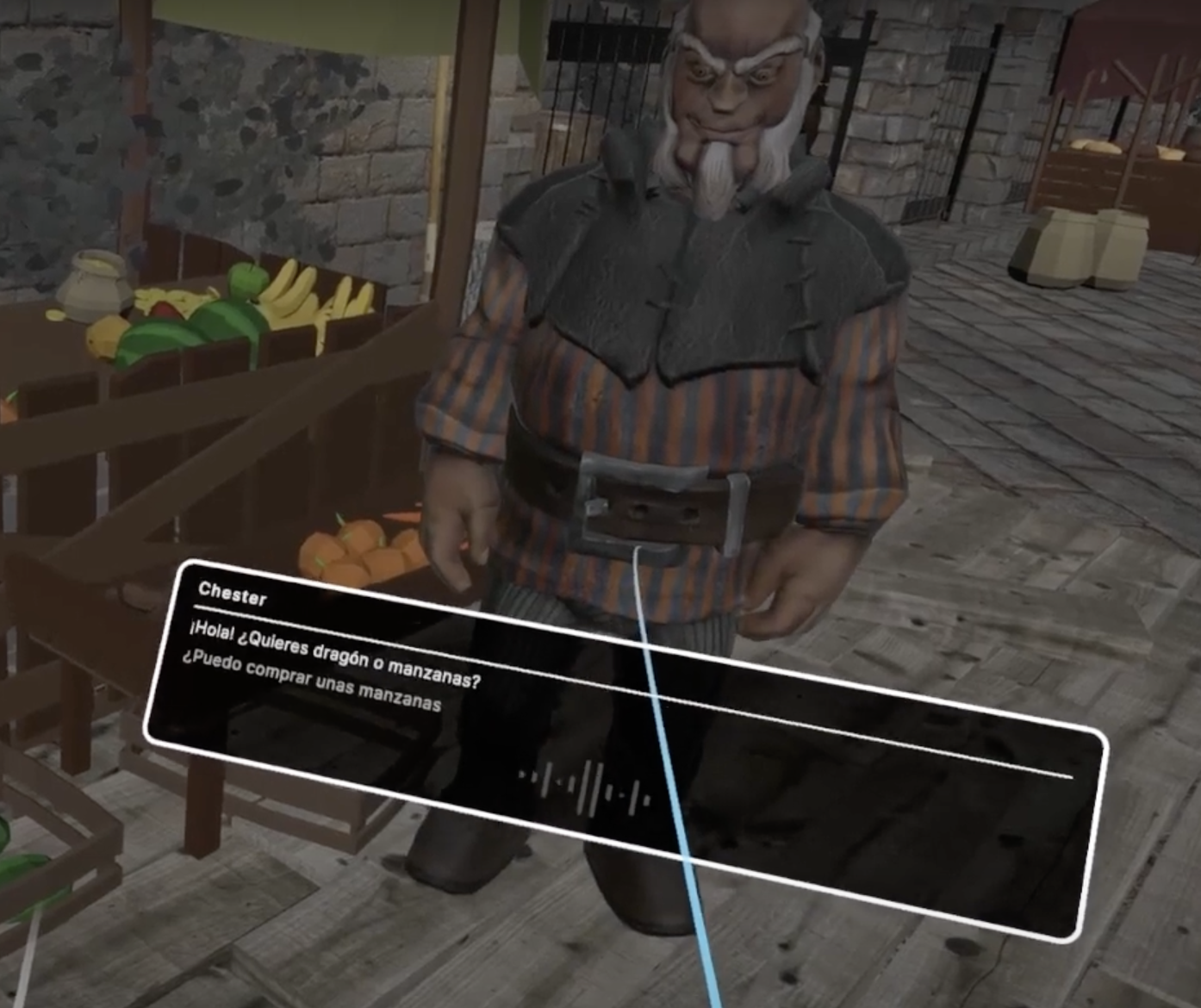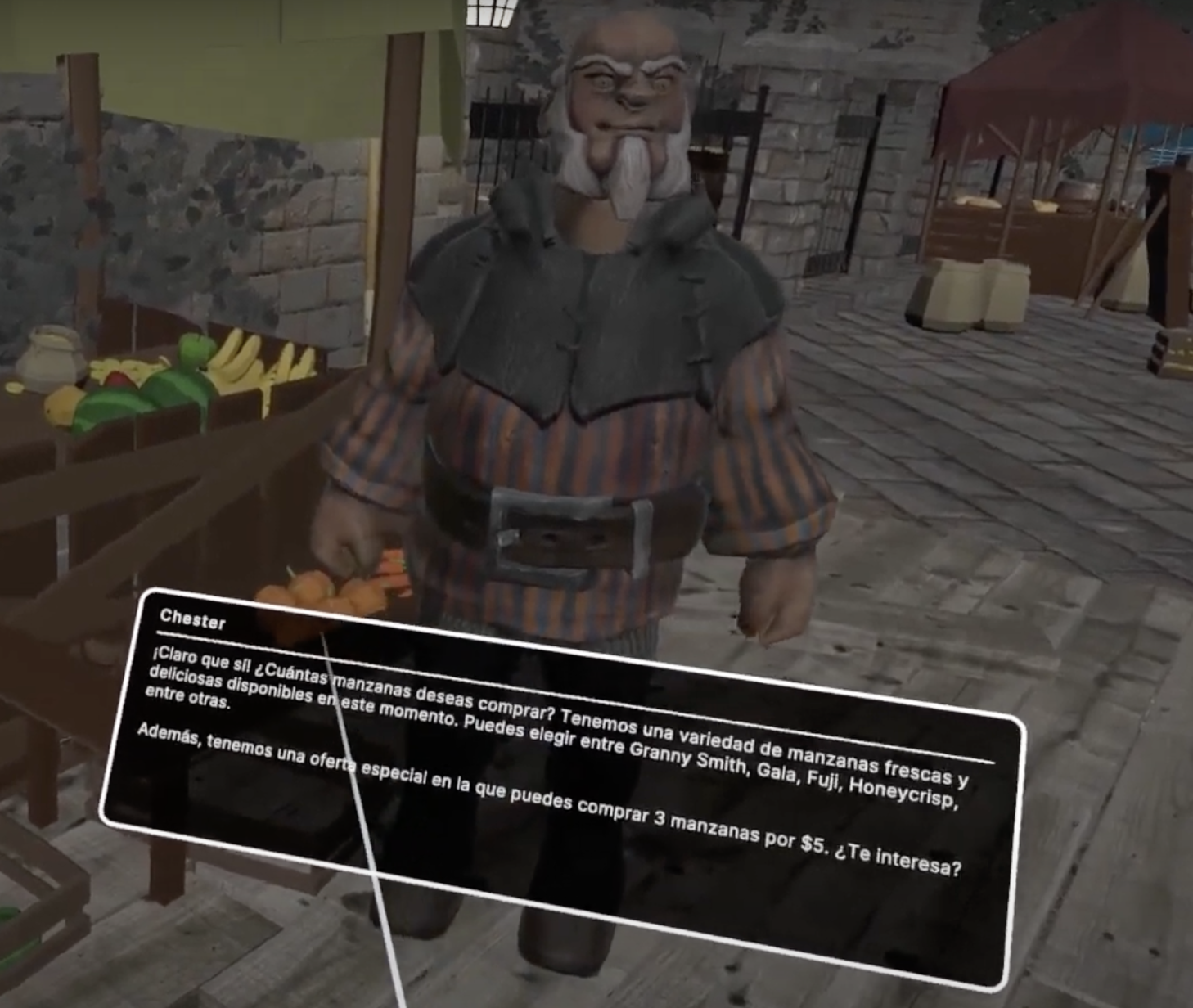Lingua Franca
Interactive and Adaptive VR Language Learning Game
🏆 TreeHacks 2024 – Winner Education Grand Prize (4x Quest 3). Collaborated with Jacob Roberts-Baca, Alexander-Alvarado Barahona, and Katie Baker. From the DevPost.
Overview of our project.
Inspiration
Conventional language learning apps like Duolingo don’t offer the ability to have freeform and dynamic conversations. Additionally, finding a language partner can be difficult and costly.
Lingua Franca tackles this head-on by offering intermediate to advanced language learners an immersive, interactive experience. It’s like an interactive 4D Duolingo where you travel through a storyworld and interact with AI-powered characters that respond in any language you want to learn!
Although other apps exist that try to do the same thing, their interaction topics are hard-coded, meaning that you encounter yourself in the same dialogue over and over again. By leveraging LLMs, we’re able to ensure that no two experiences are the same!
What it does
You stumble into a foreign land and must communicate with the townsfolk in order to get by. As you talk with them, you must reply by recording yourself speaking in their language. Aided by LLMs, their responses dynamically change depending on what you say. Additionally, at some points in the conversation, they will give you checkpoints that you must accomplish, which encourages you to talk to other villagers.
After each of your responses, you can also see alternative phrases you could’ve said in response to the villager. Seeing these alternative responses can aid in learning vocabulary, grammar, and can help the user branch outside of their usual go-to phrases in the language they are learning.
Not only can you guide the conversation to whatever topic you’d like to practice, but to keep the user engaged, we’ve also added backstory to the characters in the village. Each time you talk with them, you can learn something more about their relationship with others in the village!

The starting screen where you can select your language. You can select any language in theory (since the agents can inherently support any language), we just supported these two given time contraints.

Your first interaction with Chester, an automated character in the world! He has a series of objectives to meet, here he's selling us fruit. You ask him to buy some.

Your second interaction with Chester. He heard us (implemented multi-language voice recognition API on Oculus) and is responding – this isn't hard-coded!!
How we built it
Development was done in Unity3D. We used Wit.ai to capture and transcribe the user’s recorded responses. Those transcribed responses were then fed into an LLM from Together.ai, along with extra information to give context and guide the LLM to prompt the user to complete checkpoints. The response from the LLM becomes the villager’s response to the player. We created the world using assets from Unity Asset store, and the character models are from Mixamo.
What we learned
Developing in VR was new to all team members, so developing for the Oculus Quest and using Unity3D was a great learning experience. LLMs aren’t perfect, and working to mitigate poor, harmful, or unproductive responses is difficult. However, we took this challenge seriously while working on this app and carefully tuned our prompts to give the model the context it needed to avoid these situations.
What’s next for Lingua Franca
The next steps for this app include: Adding more languages adding audio feedback from the villagers as an addition to text responses adding new locations, characters, and worlds for more variation in the experience.
🚧 still working on this page (come back later) 🚧